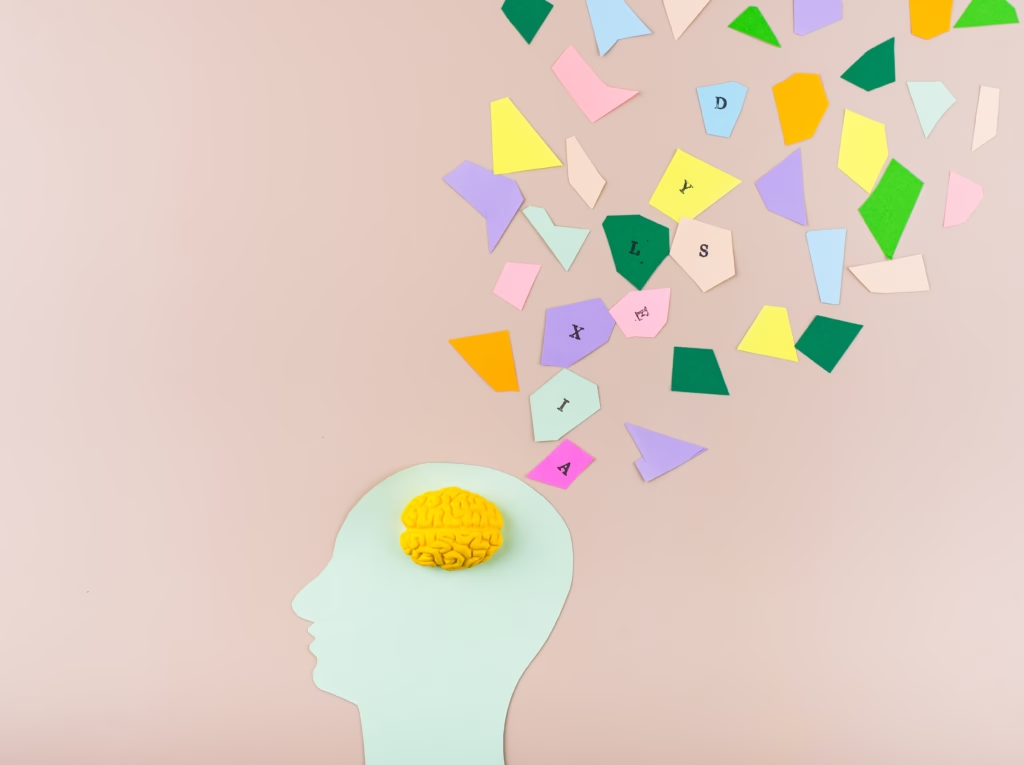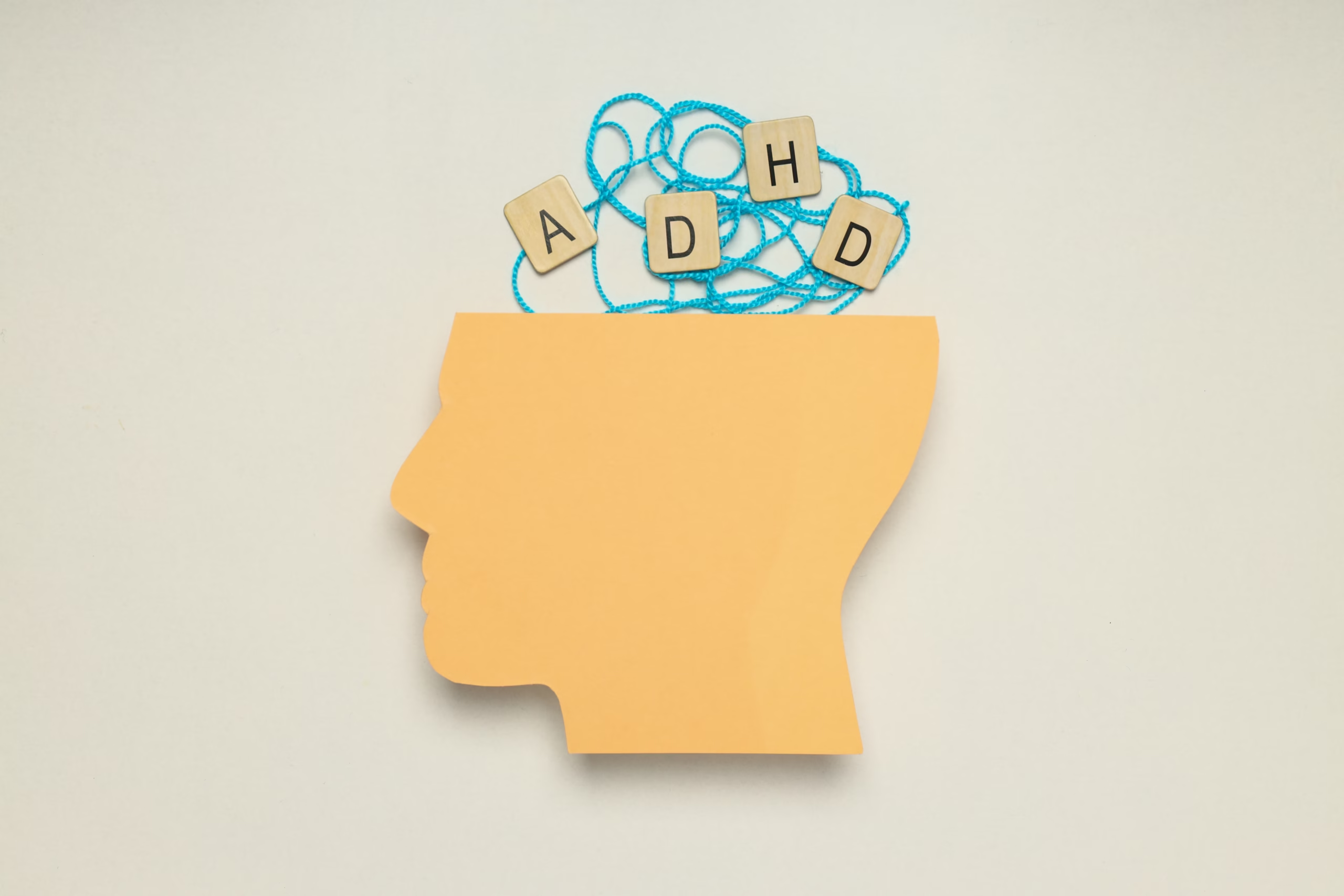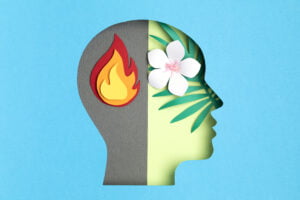In order to understand the difference between ADHD and Depression, I want you to meet Jamie. Jamie’s mind often feels like a crowded room where thoughts shout louder than the world outside, making it hard to focus on anything real.
Jamie has ADHD, a childhood-onset neurodevelopmental disorder marked by inattention and impulsivity. But then, depression quietly crept in, making everything feel heavier, slower, and more confusing.
The alignment model explains Jamie’s experience: when the internal world dominates, the external world shrinks and blurs, and everything that once mattered becomes hard to grasp. This imbalance fuels the cycle of ADHD and depression, trapping Jamie in a fog of conflicting emotions and overwhelming thoughts.
Introduction to Attention Deficit Hyperactivity Disorder (ADHD)
ADHD often starts in childhood and sticks around into adulthood, just like Jamie’s story. The Diagnostic and Statistical Manual (DSM) provides clear criteria to help doctors identify ADHD, but Jamie’s experience shows it’s more than just symptoms on paper. It involves how the brain processes information, regulates emotions, and manages daily tasks.
Understanding ADHD requires looking beyond the checklist of symptoms to the impact it has on an individual’s life. For Jamie, ADHD means struggling with organizing tasks, staying focused during conversations, and managing impulsive reactions, which can lead to challenges at work and in relationships.
But then, Jamie realized that understanding how ADHD mixes with emotions and other mental health issues was key to finding real help. It’s not just about attention; it’s about the whole person and how their unique brain wiring interacts with the world around them.

Adult ADHD and Comorbidity
Adults with ADHD often face other challenges like anxiety disorders, mood disorders, and substance use disorders. Jamie’s depression wasn’t just sadness—it was part of a bigger picture called comorbid depression, which made life even more complicated.
Comorbid ADHD means that ADHD doesn’t occur in isolation but alongside other psychiatric disorders, creating a complex clinical profile. This overlap can make diagnosis and treatment more challenging, as symptoms may blend or mask each other.
But then, Jamie learned that treating ADHD and depression together could bring real relief, improving mental health and daily functioning. This approach felt like a lifeline, offering a chance to break the cycle of frustration and despair.
Affective Disorders and ADHD
Jamie’s mood swings and feelings of emptiness reflected affective disorders, including major depressive disorder and sometimes bipolar disorder. The American Psychiatric Association’s clinical guidelines helped Jamie’s care team navigate this complex overlap, providing a framework for diagnosis and treatment.
Affective disorders often share symptoms with ADHD, such as difficulty concentrating and restlessness, which can complicate clinical diagnosis. Jamie’s experience highlighted the importance of a thorough assessment to distinguish between overlapping symptoms and to identify co-occurring conditions.
But then, Jamie found hope in cognitive-behavioral treatment (CBT), which offered practical tools to manage both ADHD and depressive symptoms. It was a way to regain control by changing unhelpful thought patterns and developing coping strategies tailored to the unique challenges of comorbid disorders.

Anxiety Symptoms and Disorders in ADHD
Anxiety often tags along with ADHD, making Jamie feel restless and overwhelmed. Generalized anxiety disorder is common in people with ADHD, and Jamie’s worries sometimes spiraled out of control, contributing to the overall burden.
Co-occurring anxiety symptoms can intensify the difficulties of ADHD, leading to increased stress and impaired functioning. For Jamie, this meant struggling with racing thoughts, physical tension, and a constant sense of unease.
But then, stimulant medications helped ease some of the tension, while mindfulness practices taught Jamie to observe anxious thoughts without getting caught up in them. This balance was new and powerful, offering a way to reduce anxiety’s grip while improving attention and focus.
Bipolar Disorder and ADHD
At times, Jamie’s mood swings were so intense they mimicked bipolar disorder, making diagnosis tricky. The Diagnostic and Statistical Manual’s criteria helped clarify the picture, but treatment had to be carefully tailored to address the nuances of both conditions.
Bipolar disorder and ADHD share features like impulsivity and mood instability, which can overlap and confuse clinical diagnosis. Jamie’s journey underscored the need for specialized assessment to identify the presence of both disorders and to develop an effective treatment plan.
But then, Jamie discovered acceptance and commitment therapy (ACT), which encouraged embracing difficult feelings mindfully rather than fighting them. This shift opened a new path to healing, fostering resilience and emotional flexibility.
Adolescent Depression and ADHD
Jamie’s struggles began in adolescence, where depressive symptoms and ADHD were tangled together. Early intervention, as experts at Harvard Medical School emphasize, can change the course of these conditions, improving long-term outcomes.
Adolescence is a critical period where ADHD and depression symptoms may first emerge or intensify. For Jamie, recognizing these early signs was crucial to accessing timely support and preventing worsening symptoms.
But then, Jamie’s family history revealed genetic factors influencing both ADHD and depression, helping explain why these challenges felt so persistent. Understanding the biological underpinnings provided validation and motivation to pursue comprehensive care.
Treatment Options for Adult ADHD
Jamie’s treatment journey included medication, therapy, and lifestyle changes. Stimulant medications helped improve focus, while antidepressants lifted mood and eased depressive symptoms, addressing the complex interplay of ADHD and depression.
Treatment plans for adults with ADHD and depression often require a combination of pharmacological and non-pharmacological approaches. Jamie’s experience showed how integrating medication with therapy and lifestyle adjustments can enhance overall well-being.
But then, Jamie embraced mindfulness and ACT, learning to accept thoughts and feelings without judgment. This helped reduce the internal chaos and brought moments of calm, complementing the effects of medication.
Antidepressant Medication for ADHD and Depression
Selective serotonin reuptake inhibitors (SSRIs) helped Jamie’s depression but didn’t directly address ADHD symptoms. Careful monitoring ensured side effects and interactions were managed safely, highlighting the importance of personalized care.
Combining antidepressants with ADHD medications requires careful coordination to optimize benefits and minimize risks. Jamie’s healthcare team worked closely to adjust treatments based on response and tolerability.
But then, Jamie realized that combining medication with mindful-based therapies created a more complete treatment plan, addressing both mind and body. This holistic approach supported sustained recovery and improved quality of life.
Adults with ADHD: Unique Challenges
Adults with ADHD face unique challenges, including low self-esteem, functional impairment, and often missed diagnoses. Jamie struggled with these but found support through organizations like the National Alliance on Mental Illness (NAMI), which provided community and resources.
Many adults with ADHD remain undiagnosed or untreated, leading to years of difficulty in personal and professional life. Jamie’s story highlights the importance of awareness and advocacy to improve recognition and access to care.
But then, Jamie’s growing awareness of the condition and comorbid disorders empowered them to seek better care and self-compassion, transforming challenges into opportunities for growth.
Screening for Adult ADHD
Screening tools like the Adult ADHD Self-Report Scale (ASRS) helped Jamie and clinicians uncover the full picture. A thorough evaluation, including psychological assessment, was essential for accurate diagnosis and informed treatment planning.
Early and accurate ADHD diagnosis in adults can prevent misdiagnosis and inappropriate treatments. Jamie’s experience underscores the value of comprehensive screening in clinical practice.
But then, early intervention sparked hope, showing Jamie that managing symptoms and improving quality of life was possible with the right support and strategies.

Neurobiological Factors and ADHD
Jamie’s brain chemistry, shaped by genetics and environment, influenced ADHD symptoms. Dopamine and the brain’s reward system played central roles in attention and motivation, explaining some of the core challenges Jamie faced.
Advances in ADHD research have illuminated the neurobiological foundations of the disorder, offering insights into targeted treatments. Jamie’s understanding of these factors fostered acceptance and optimism.
But then, learning about these neurobiological factors helped Jamie feel less alone and more hopeful about treatment options, knowing that ADHD is a recognized medical condition with effective interventions.
Neurocognitive Impairments and ADHD
Jamie struggled with executive function deficits—problems with attention, working memory, and impulse control—due to changes in brain regions like the prefrontal cortex and basal ganglia.
These neurocognitive impairments can affect daily tasks such as planning, organizing, and regulating emotions. Jamie’s challenges in these areas were significant but not insurmountable.
But then, CBT and ACT provided strategies to strengthen these skills and build mindfulness, helping Jamie respond to challenges with greater calm and clarity. This empowered Jamie to navigate life’s demands more effectively.
Jamie’s journey shows how ADHD and depression can blur the lines between the inside and outside worlds. Through acceptance, mindfulness, and aligned treatment, clarity and balance are within reach, even when the internal noise feels overwhelming.





